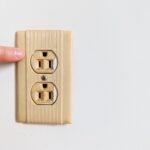Understanding silicone types and applications
Silicones play a crucial role in electrical and plumbing projects. These versatile materials offer excellent sealing and insulating properties. There are various types of silicones available, each designed for specific uses. Neutral-cure silicones, for instance, are ideal for use with sensitive electronics. Acetoxy-cure silicones, on the other hand, work well for general-purpose applications. High-temperature silicones can withstand extreme heat up to 300°C. It’s essential to choose the right silicone for your project to ensure optimal performance and longevity.
When selecting Silicones https://onninen.pl/en/products/Tools-and-OHS/Foams-silicones-chemicals/Silicones, consider factors such as cure time, temperature resistance, and compatibility with substrates. Fast-curing silicones typically set within 10-30 minutes, while slower-curing options may take 24-48 hours to fully cure. Some silicones are specifically formulated for use on plastics, metals, or glass. Always read the manufacturer’s instructions and safety data sheets before application. Proper surface preparation is key to ensuring a strong bond and effective seal.
Application techniques can significantly impact the performance of silicones. Use a caulking gun for precise and controlled dispensing. Smooth the silicone bead with a wet finger or specialized tool within 5-10 minutes of application. This helps create a professional finish and ensures proper adhesion. For electrical applications, use silicones with good dielectric properties, typically above 15 kV/mm. In plumbing, opt for silicones with excellent water resistance and mold-inhibiting properties. Remember to allow sufficient curing time before exposing the silicone to water or stress.
Essential tools for electrical and plumbing work
Having the right tools is crucial for efficient and safe electrical and plumbing work. For electrical tasks, essential tools include wire strippers, multimeters, and insulated screwdrivers. Wire strippers come in various sizes, typically ranging from 10 to 22 AWG. A good quality multimeter should have both AC and DC voltage measurement capabilities, with ranges up to 600V or higher. Insulated screwdrivers must be rated for at least 1000V to ensure safety when working with live circuits.
Plumbing work requires a different set of tools. Pipe wrenches, pliers, and pipe cutters are fundamental. Pipe wrenches typically come in sizes from 6 to 48 inches, with 14 and 18-inch models being most common. Adjustable pliers, often called channel locks, are available in lengths from 6 to 16 inches. Pipe cutters can handle various materials, including copper, PVC, and PEX. Choose tools that are ergonomically designed to reduce hand fatigue during extended use.
Proper maintenance of tools and ohs https://onninen.pl/en/products/Tools-and-OHS equipment is essential for longevity and safety. Clean tools after each use and store them in a dry place. Regularly inspect electrical tools for damaged insulation or exposed wires. For plumbing tools, apply a light coat of oil to prevent rust. Replace worn or damaged tools promptly. Many manufacturers offer warranties ranging from 1 to 5 years on hand tools. Investing in high-quality tools can save money in the long run and improve work efficiency.
Importance of personal protective equipment (PPE)
Personal protective equipment is crucial for ensuring safety in electrical and plumbing work. Essential PPE items include safety glasses, gloves, and hard hats. Safety glasses should meet ANSI Z87.1 standards for impact resistance. Electrical work requires insulated gloves rated for the voltage being handled, typically available in classes 00 to 4, covering voltages from 500V to 36,000V. Hard hats must comply with ANSI Z89.1 standards and should be replaced every 5 years or sooner if damaged.
Proper footwear is another critical component of PPE. For electrical work, shoes should have electrical hazard (EH) protection and a minimum rating of 18,000V. In plumbing, waterproof boots with slip-resistant soles are essential. Steel-toed boots offering protection up to 75 pounds of falling or rolling objects are recommended for both trades. Ensure all PPE fits correctly and is in good condition before use.
Respiratory protection may be necessary in certain situations. When working with dust, fumes, or in poorly ventilated areas, use appropriate respirators. N95 masks filter out 95% of airborne particles and are suitable for many applications. For more hazardous environments, half-face or full-face respirators with specific cartridges may be required. Always conduct a proper fit test before using any respiratory protection. Regular training on PPE use and maintenance is essential for all workers, with refresher courses recommended annually.
Proper storage and handling of materials
Correct storage of materials is vital for maintaining their quality and ensuring safety. Store silicones and adhesives in a cool, dry place with temperatures between 5°C and 25°C. Most unopened silicone cartridges have a shelf life of 12-18 months. Once opened, use within 24 hours for best results. Keep electrical components in anti-static bags or containers to prevent damage from electrostatic discharge. Copper pipes should be stored horizontally on racks to prevent bending or damage.
Handling materials properly reduces the risk of accidents and damage. When moving heavy items, use appropriate lifting techniques or mechanical aids. A general rule is to not lift more than 23 kg (50 lbs) without assistance. For electrical cables, observe the maximum pulling tension specified by the manufacturer, typically ranging from 300 to 1000 lbs depending on the cable type. When uncoiling wire or pipe, use proper techniques to prevent kinking or damage.
Organize your storage area efficiently to improve productivity and safety. Use labeled bins or shelves to categorize materials. Implement a first-in, first-out (FIFO) system for items with expiration dates. Keep frequently used items at easily accessible heights, typically between waist and shoulder level. Ensure storage areas have adequate lighting, with a minimum of 300 lux for general areas and 500 lux for detailed work. Regularly inspect stored materials for signs of damage or degradation, and dispose of any compromised items properly.
Best practices for waste management and recycling
Proper waste management is crucial in electrical and plumbing work. Segregate waste into categories such as metal, plastic, hazardous, and general waste. Many materials can be recycled, including copper wire, PVC pipes, and certain types of packaging. Copper recycling can recover up to 90% of the metal, significantly reducing environmental impact. PVC recycling can save up to 90% of the energy required to produce new PVC.
Hazardous waste requires special handling and disposal. This includes items like used silicone cartridges, contaminated rags, and certain electrical components. Many localities have specific regulations for hazardous waste disposal. For example, some areas require businesses to obtain a hazardous waste generator ID and follow strict documentation procedures. Always consult local regulations and use certified waste disposal services when dealing with hazardous materials.
Implementing a waste reduction strategy can lead to cost savings and environmental benefits. Consider using refillable silicone cartridges, which can reduce packaging waste by up to 60%. Purchase materials in bulk when appropriate to minimize packaging. Donate or sell usable leftover materials to reduce waste. Many suppliers offer take-back programs for certain products. Educate employees on proper waste management practices and set clear goals for waste reduction. Regular audits of waste management practices can help identify areas for improvement and ensure compliance with regulations.





